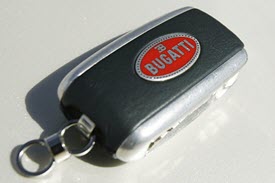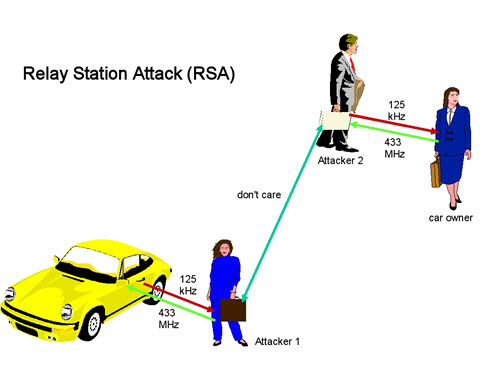
Keeping clients' computers safe and profitable for over 30 years
Home Forms About Current Newsletter subscribe
Search All Articles
Browse by Category

Passive key hacks
 In mankind's constant effort to make everything easier and easier, auto makers decided that pressing the button on your key fob was just too hard. So they created passive key fobs for their upscale lines. These keys will open your door when you get close to it, rather than forcing you to press the button.
In mankind's constant effort to make everything easier and easier, auto makers decided that pressing the button on your key fob was just too hard. So they created passive key fobs for their upscale lines. These keys will open your door when you get close to it, rather than forcing you to press the button. Last month I pointed you to an article showing how hackers can get into most cars where you press the button on the key fob. This month, I'll show you how the passive keys make the thieves jobs even easier. Everyone wins. They make it easier for both you and the thieves to open your doors.
The basic idea of the passive key is that a very weak signal from a radio transmitter in the car will activate the more powerful radio in your key fob. Since the signal is very weak, it only works when the key fob is within a few feet. But, someone got the bright idea of amplifying the signal. If you put an amplifier near the car, it will blast the car's transmitter to your key fob at a distance of up to 100 yards. No doubt, stronger amplifiers could do more.
Some attackers use the two attacker system where the amplifier goes between two attackers as shown below.

Solutions
Some of these passive key systems have a way to turn it off so you simply use the key like we used to in the olden days. If you can't do that, I suggest getting a key fob faraday cage to protect your key fob from radio signals. They are sold in many places and are inexpensive. Be sure and test your key fob faraday cage and you'll need to close any cracks as a faraday cage with a crack in it, isn't likely to be effective.Be careful not to simply get an EMP (Electro Magnetic Pulse) protector. These are supposed to shield your key fob in case of an EMP attack, but don't stop WiFi waves.
Some options
- Fobguard makes one
- Amazon List of available inexpensive key Faraday cages
More Information
- Forbes May 2015
- Article from 2011 phys.org
- ARS Technica article from June 2015
- Network World story: describes $17 signal amplifier for passive wireless
- Relay Attacks on Passive Keyless Entry and Start Systems in Modern Cars
Date: September 2015

This article is licensed under a Creative Commons Attribution-NoDerivs 3.0 Unported License.